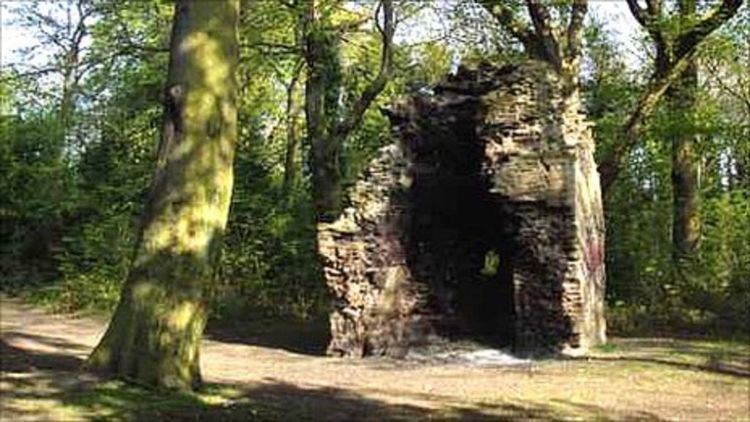 | ||
Clever cows grazing at thornhill hall farm
Thornhill Hall are the ruins of a medieval Manor house on a moated island located in Rectory Park, Thornhill, West Yorkshire, England. They are grade II listed. and the moat and surrounding grounds is a scheduled monument.
Contents
Excavations carried out between 1964 and 1972 proved that there had been two halls on the island, an earlier large thirteenth-century building with clay-bonded foundation walls, and a later c. 1450 stone H-plan building. The later building showed signs of renovation in the sixteenth century, when it was given a paved floor, plaster walls and a chimney .
History
In the reign of Henry III, Thornhill Hall was the seat of the Thornhill family, who intermarried with the De Fixbys and Babthorpes in the reigns of Edward I and Edward II. In 1370, in the reign of Edward III, Elizabeth Thornhill, the only child of Simon Thornhill, married Sir Henry Savile. This extinguished the family line of Thornhills of Thornhill which now passed down the Savile line. Thornhill Hall then became the principal seat of the powerful Savile family. [1]
The Saviles later intermarried with the Calverley family, so that when Sir John Savile died in 1503 in Thornhill, he left provision in his will for his sister Alice, who had married Sir William Calverley.
George Savile was created a baronet in 1611. The Saviles remained here until the English Civil War when the house was besieged by the forces of Parliament, (having been previously fortified by Sir William Savile, the third baronet of the family). The house was captured, burnt and destroyed, after which the family moved their seat to Rufford Abbey in Nottinghamshire.
Some ruins of the house and the moat still remain at Thornhill Rectory Park.[2] This large house had a secret underground passage, that lead to Thornhill Parish Church. [3] just a few hundred yards away from the park. The passage remained until the early 1990s when it was filled in due to safety reasons.
Recent events
The Heritage Lottery Fund awarded a grant to the architectural study of the ruins in the summer of 2011.
Images of the ruined Hall
Part of ruined wall Chimney stack
